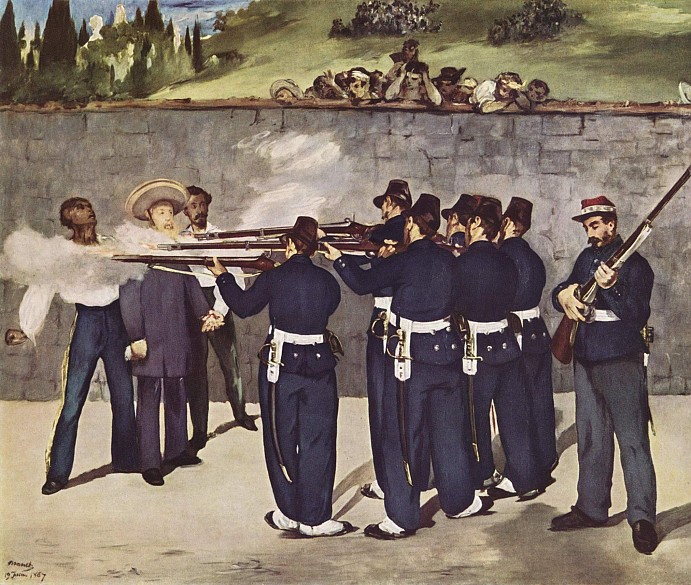The Mexican venture
At the beginning of the 1860s Ferdinand Maximilian was being considered as a candidate for various crowns, including those of Greece or Poland. However, he decided on Mexico, the crown of which was offered to him on the initiative of the French emperor, Napoleon III.
Fired by the prospect of an imperial title and the chance of ascending a throne as sovereign, the archduke was filled with ambition and fully supported by his equally ambitious wife, Charlotte of Belgium. On the crossing to South America, in true Habsburg fashion the designated Emperor of Mexico occupied himself by drawing up the ceremonial etiquette to be observed at his new court.
Thus began the Mexican venture in 1864. It was tantamount to a suicide mission, since Emperor Maximilian I of Mexico, as he now styled himself, had no real basis of power in the country. Rent by civil war, large swathes of this huge territory were under the control of republican forces opposed to a monarchy headed by a European ruler. The Habsburg emperorship had also been proclaimed against the express will of the United States of America, which although not yet a global power were more than capable of defending their interests in the Americas. Thus the newly installed emperor was dependent on the favour and military presence of the French.
The disaster started when the French withdrew from Mexico in 1866. Under the leadership of Benito Juárez, the republican president who had been deposed by the French, the imperial venture was to come to a precipitate end.
Powerless as he was, the emperor was fighting a losing battle. As a symbol of hated foreign manipulation, once he had been deposed and captured by republican troops in 1867, it was inevitable that he would be condemned to death. Maximilian asked the firing squad to aim low in order to preserve his face so that his mother would be able to bear the sight of his corpse.
However, numerous problems arose when his body was repatriated after an interval of several months. Before being conveyed to Vienna it was embalmed in Mexico. The procedure went wrong and had to be repeated. When the coffin arrived in Vienna after seven months the corpse was so disfigured that Sophie exclaimed: ‘This is not my son!’
All this fed the rumour that Maximilian had been secretly pardoned and that President Juárez had spared his life on condition he leave Mexico and make a new life for himself under a false name. According to research carried out by the South American amateur historian Rolando Deneke, Maximilian lived on as Justo Armas in El Salvador, dying there in 1936 at the age of 104. The former emperor is said to have been an advisor and chief of protocol to President Gregorio Arbizu. As proof of his true identity it is said that Justo Armas possessed numerous objects owned by Maximilian and bore a remarkable resemblance to the archduke. Armas is alleged to have taken great care to keep his origins a secret. In addition he always went barefoot, giving as his reason a vow he had made to the Virgin Mary, who had rescued him ‘from great danger’. Whether or not this story is true, it symbolizes the way Maximilian lives on as the archetype of a monarch who was doomed to tragic failure.












